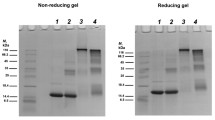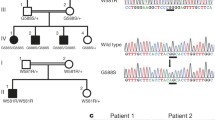Abstract
Proteins in the eye lens have negligible turnover and therefore progressively accumulate chemical modifications during aging. Carbonyls and oxidative stresses, which are intricately linked to one another, predominantly drive such modifications. Oxidative stress leads to the loss of glutathione (GSH) and ascorbate degradation; this in turn leads to the formation of highly reactive dicarbonyl compounds that react with proteins to form advanced glycation end products (AGEs). The formation of AGEs leads to the crosslinking and aggregation of proteins contributing to lens aging and cataract formation. To inhibit AGE formation, we developed a disulfide compound linking GSH diester and mercaptoethylguanidine, and we named it carboxitin. Bovine lens organ cultured with carboxitin showed higher levels of GSH and mercaptoethylguanidine in the lens nucleus. Carboxitin inhibited erythrulose-mediated mouse lens protein crosslinking, AGE formation and the formation of 3-deoxythreosone, a major ascorbate-derived AGE precursor in the human lens. Carboxitin inhibited the glycation-mediated increase in stiffness in organ-cultured mouse lenses measured using compressive mechanical strain. Delivery of carboxitin into the lens increases GSH levels, traps dicarbonyl compounds and inhibits AGE formation. These properties of carboxitin could be exploited to develop a therapy against the formation of AGEs and the increase in stiffness that causes presbyopia in aging lenses.







Similar content being viewed by others
References
Andley, U.P.: Crystallins in the eye: function and pathology. Prog. Retin. Eye Res. 26(1), 78–98 (2007). https://doi.org/10.1016/j.preteyeres.2006.10.003
Biemel, K.M., Friedl, D.A., Lederer, M.O.: Identification and quantification of major maillard cross-links in human serum albumin and lens protein. Evidence for glucosepane as the dominant compound. J. Biol. Chem. 277(28), 24907–24915 (2002). https://doi.org/10.1074/jbc.M202681200
Bonet Serra, B., Barrio Merino, A., Quintanar Rioja, A., Alaves Buforn, M., Nevado Santos, M.: Steatosis and cirrhosis secondary to insulin resistance in children. Possible physiopathological mechanisms. An. Esp. Pediatr. 56(4), 353–356 (2002)
Bron, A.J., Vrensen, G.F., Koretz, J., Maraini, G., Harding, J.J.: The ageing lens. Ophthalmologica. 214(1), 86–104 (2000). https://doi.org/10.1159/000027475
Chang, D., Zhang, X., Rong, S., Sha, Q., Liu, P., Han, T., Pan, H.: Serum antioxidative enzymes levels and oxidative stress products in age-related cataract patients. Oxidative Med. Cell. Longev. 2013, 587826–587827 (2013). https://doi.org/10.1155/2013/587826
Cheng, R., Lin, B., Lee, K.W., Ortwerth, B.J.: Similarity of the yellow chromophores isolated from human cataracts with those from ascorbic acid-modified calf lens proteins: evidence for ascorbic acid glycation during cataract formation. Biochim. Biophys. Acta. 1537(1), 14–26 (2001). https://doi.org/10.1016/s0925-4439(01)00051-5
Cheng, C., Gokhin, D.S., Nowak, R.B., Fowler, V.M.: Sequential application of glass coverslips to assess the compressive stiffness of the mouse lens: strain and morphometric analyses. J. Vis. Exp. (111), (2016). https://doi.org/10.3791/53986
Fan, X., Reneker, L.W., Obrenovich, M.E., Strauch, C., Cheng, R., Jarvis, S.M., Ortwerth, B.J., Monnier, V.M.: Vitamin C mediates chemical aging of lens crystallins by the Maillard reaction in a humanized mouse model. Proc. Natl. Acad. Sci. U. S. A. 103(45), 16912–16917 (2006). https://doi.org/10.1073/pnas.0605101103
Fricke, T.R., Tahhan, N., Resnikoff, S., Papas, E., Burnett, A., Ho, S.M., Naduvilath, T., Naidoo, K.S.: Global prevalence of presbyopia and vision impairment from uncorrected presbyopia: systematic review, meta-analysis, and modelling. Ophthalmology. 125(10), 1492–1499 (2018). https://doi.org/10.1016/j.ophtha.2018.04.013
Fujioka, M., Tanaka, M.: Enzymic and chemical synthesis of epilson-N-(L-propionyl-2)-L-lysine. Eur. J. Biochem. 90(2), 297–300 (1978). https://doi.org/10.1111/j.1432-1033.1978.tb12603.x
Gakamsky, A., Duncan, R.R., Howarth, N.M., Dhillon, B., Buttenschon, K.K., Daly, D.J., Gakamsky, D.: Tryptophan and non-tryptophan fluorescence of the eye Lens proteins provides diagnostics of cataract at the molecular level. Sci. Rep. 7, 40375 (2017). https://doi.org/10.1038/srep40375
Gangadhariah, M.H., Mailankot, M., Reneker, L., Nagaraj, R.H.: Inhibition of methylglyoxal-mediated protein modification in glyoxalase I overexpressing mouse lenses. J. Ophthalmol. 2010, 274317–274317 (2010). https://doi.org/10.1155/2010/274317
Garlick, R.L., Mazer, J.S., Chylack Jr., L.T., Tung, W.H., Bunn, H.F.: Nonenzymatic glycation of human lens crystallin. Effect of aging and diabetes mellitus. J. Clin. Invest. 74(5), 1742–1749 (1984). https://doi.org/10.1172/JCI111592
Garner, W.H., Garner, M.H.: Protein disulfide levels and Lens elasticity modulation: applications for presbyopia. Invest. Ophthalmol. Vis. Sci. 57(6), 2851–2863 (2016). https://doi.org/10.1167/iovs.15-18413
Glomb, M.A., Monnier, V.M.: Mechanism of protein modification by glyoxal and glycolaldehyde, reactive intermediates of the Maillard reaction. J. Biol. Chem. 270(17), 10017–10026 (1995). https://doi.org/10.1074/jbc.270.17.10017
Glomb, M.A., Pfahler, C.: Amides are novel protein modifications formed by physiological sugars. J. Biol. Chem. 276(45), 41638–41647 (2001). https://doi.org/10.1074/jbc.M103557200
Haik Jr., G.M., Lo, T.W., Thornalley, P.J.: Methylglyoxal concentration and glyoxalase activities in the human lens. Exp. Eye Res. 59(4), 497–500 (1994). https://doi.org/10.1006/exer.1994.1135
Hains, P.G., Truscott, R.J.: Age-dependent deamidation of lifelong proteins in the human lens. Invest. Ophthalmol. Vis. Sci. 51(6), 3107–3114 (2010). https://doi.org/10.1167/iovs.09-4308
Harding, J.J.: Free and protein-bound glutathione in normal and cataractous human lenses. Biochem. J. 117(5), 957–960 (1970). https://doi.org/10.1042/bj1170957
Hooi, M.Y., Truscott, R.J.: Racemisation and human cataract. D-Ser, D-Asp/Asn and D-Thr are higher in the lifelong proteins of cataract lenses than in age-matched normal lenses. Age (Dordr). 33(2), 131–141 (2011). https://doi.org/10.1007/s11357-010-9171-7
Horwitz, J.: Alpha-crystallin can function as a molecular chaperone. Proc. Natl. Acad. Sci. U. S. A. 89(21), 10449–10453 (1992). https://doi.org/10.1073/pnas.89.21.10449
de Jong, W.W., Mulders, J.W., Voorter, C.E., Berbers, G.A., Hoekman, W.A., Bloemendal, H.: Post-translational modifications of eye lens crystallins: crosslinking, phosphorylation and deamidation. Adv. Exp. Med. Biol. 231, 95–108 (1988). https://doi.org/10.1007/978-1-4684-9042-8_8
Kisic, B., Miric, D., Zoric, L., Ilic, A., Dragojevic, I.: Antioxidant capacity of lenses with age-related cataract. Oxidative Med. Cell. Longev. (2012), 467130 (2012). https://doi.org/10.1155/2012/467130
Kodama, T., Takemoto, L.: Characterization of disulfide-linked crystallins associated with human cataractous lens membranes. Invest. Ophthalmol. Vis. Sci. 29(1), 145–149 (1988)
Kumar, M.S., Koteiche, H.A., Claxton, D.P., McHaourab, H.S.: Disulfide cross-links in the interaction of a cataract-linked alphaA-crystallin mutant with betaB1-crystallin. FEBS Lett. 583(1), 175–179 (2009). https://doi.org/10.1016/j.febslet.2008.11.047
Lange, J.N., Wood, K.D., Knight, J., Assimos, D.G., Holmes, R.P.: Glyoxal formation and its role in endogenous oxalate synthesis. Adv. Urol. 2012, 819202 (2012). https://doi.org/10.1155/2012/819202
Lederer, M.O., Klaiber, R.G.: Cross-linking of proteins by Maillard processes: characterization and detection of lysine-arginine cross-links derived from glyoxal and methylglyoxal. Bioorg. Med. Chem. 7(11), 2499–2507 (1999). https://doi.org/10.1016/s0968-0896(99)00212-6
Lund, A.L., Smith, J.B., Smith, D.L.: Modifications of the water-insoluble human lens alpha-crystallins. Exp. Eye Res. 63(6), 661–672 (1996). https://doi.org/10.1006/exer.1996.0160
Lyons, T.J., Silvestri, G., Dunn, J.A., Dyer, D.G., Baynes, J.W.: Role of glycation in modification of lens crystallins in diabetic and nondiabetic senile cataracts. Diabetes. 40(8), 1010–1015 (1991). https://doi.org/10.2337/diab.40.8.1010
McAvoy, J.W., Chamberlain, C.G., de Iongh, R.U., Hales, A.M., Lovicu, F.J.: Lens development. Eye (Lond.). 13(Pt 3b), 425–437 (1999). https://doi.org/10.1038/eye.1999.117
Monnier, V.M., Nagaraj, R.H., Portero-Otin, M., Glomb, M., Elgawish, A.H., Sell, D.R., Friedlander, M.A.: Structure of advanced Maillard reaction products and their pathological role. Nephrol. Dial. Transplant. 11(Suppl 5), 20–26 (1996). https://doi.org/10.1093/ndt/11.supp5.20
Nagaraj, R.H., Sell, D.R., Prabhakaram, M., Ortwerth, B.J., Monnier, V.M.: High correlation between pentosidine protein crosslinks and pigmentation implicates ascorbate oxidation in human lens senescence and cataractogenesis. Proc. Natl. Acad. Sci. U. S. A. 88(22), 10257–10261 (1991). https://doi.org/10.1073/pnas.88.22.10257
Nagaraj, R.H., Linetsky, M., Stitt, A.W.: The pathogenic role of Maillard reaction in the aging eye. Amino Acids. 42(4), 1205–1220 (2012). https://doi.org/10.1007/s00726-010-0778-x
Nandi, S.K., Nahomi, R.B., Rankenberg, J., Glomb, M.A., Nagaraj, R.H.: Glycation-mediated inter-protein cross-linking is promoted by chaperone-client complexes of alpha-crystallin: implications for lens aging and presbyopia. J. Biol. Chem. 295(17), 5701–5716 (2020). https://doi.org/10.1074/jbc.RA120.012604
Nemet, I., Monnier, V.M.: Vitamin C degradation products and pathways in the human lens. J. Biol. Chem. 286(43), 37128–37136 (2011). https://doi.org/10.1074/jbc.M111.245100
Petrash, J.M.: Aging and age-related diseases of the ocular lens and vitreous body. Invest. Ophthalmol. Vis. Sci. 54(14), ORSF54-59 (2013). https://doi.org/10.1167/iovs.13-12940
Rakete, S., Nagaraj, R.H.: Identification of kynoxazine, a novel fluorescent product of the reaction between 3-hydroxykynurenine and erythrulose in the human lens, and its role in protein modification. J. Biol. Chem. 291(18), 9596–9609 (2016). https://doi.org/10.1074/jbc.M116.716621
Reddy, V.N.: Glutathione and its function in the lens – an overview. Exp. Eye Res. 50(6), 771–778 (1990). https://doi.org/10.1016/0014-4835(90)90127-g
Renna, A., Vejarano, L.F., De la Cruz, E., Alio, J.L.: Pharmacological treatment of presbyopia by novel binocularly instilled eye drops: a pilot study. Ophthalmol. Ther. 5(1), 63–73 (2016). https://doi.org/10.1007/s40123-016-0050-x
Sasaki, H., Giblin, F.J., Winkler, B.S., Chakrapani, B., Leverenz, V., Shu, C.C.: A protective role for glutathione-dependent reduction of dehydroascorbic acid in lens epithelium. Invest. Ophthalmol. Vis. Sci. 36(9), 1804–1817 (1995)
Sell, D.R., Monnier, V.M.: Structure elucidation of a senescence cross-link from human extracellular matrix. Implication of pentoses in the aging process. J. Biol. Chem. 264(36), 21597–21602 (1989)
Shamsi, F.A., Lin, K., Sady, C., Nagaraj, R.H.: Methylglyoxal-derived modifications in lens aging and cataract formation. Invest. Ophthalmol. Vis. Sci. 39(12), 2355–2364 (1998)
Sharma, K.K., Santhoshkumar, P.: Lens aging: effects of crystallins. Biochim. Biophys. Acta. 1790(10), 1095–1108 (2009). https://doi.org/10.1016/j.bbagen.2009.05.008
Smuda, M., Henning, C., Raghavan, C.T., Johar, K., Vasavada, A.R., Nagaraj, R.H., Glomb, M.A.: Comprehensive analysis of maillard protein modifications in human lenses: effect of age and cataract. Biochemistry. 54(15), 2500–2507 (2015). https://doi.org/10.1021/bi5013194
Szabo, C., Bryk, R., Zingarelli, B., Southan, G.J., Gahman, T.C., Bhat, V., Salzman, A.L., Wolff, D.J.: Pharmacological characterization of guanidinoethyldisulphide (GED), a novel inhibitor of nitric oxide synthase with selectivity towards the inducible isoform. Br. J. Pharmacol. 118(7), 1659–1668 (1996). https://doi.org/10.1111/j.1476-5381.1996.tb15589.x
Taylor, A., Davies, K.J.: Protein oxidation and loss of protease activity may lead to cataract formation in the aged lens. Free Radic. Biol. Med. 3(6), 371–377 (1987). https://doi.org/10.1016/0891-5849(87)90015-3
Tessier, F., Obrenovich, M., Monnier, V.M.: Structure and mechanism of formation of human lens fluorophore LM-1. Relationship to vesperlysine A and the advanced Maillard reaction in aging, diabetes, and cataractogenesis. J. Biol. Chem. 274(30), 20796–20804 (1999). https://doi.org/10.1074/jbc.274.30.20796
Thornalley, P.K.: Esterification of reduced glutathione. Biochem. J. 275(Pt 2), 535–539 (1991). https://doi.org/10.1042/bj2750535
Thornalley, P.J.: The glyoxalase system in health and disease. Mol. Asp. Med. 14(4), 287–371 (1993). https://doi.org/10.1016/0098-2997(93)90002-u
du Toit, R.: How to prescribe spectacles for presbyopia. Community Eye Health. 19(57), 12–13 (2006)
Acknowledgments
The authors thank Saving Sight, Kansas City, MO, for providing the human lenses.
Funding
This work was supported by the National Institutes of Health Grants EY028836 and EY023286 (RHN) and an RPB challenge grant to the Department of Ophthalmology, University of Colorado.
Author information
Authors and Affiliations
Contributions
RHN and ML conceptualized the project. SKN, JR, SR and RBN conducted the experiments. SKN, SR, JR and RHN analyzed the results. All authors wrote the paper and approved the manuscript.
Corresponding author
Ethics declarations
Conflict of interest
The authors declare that they have no conflicts of interest with regard to the contents of this article.
Ethical approval
This article does not contain any studies with human participants performed by any of the authors. All animal experiments were reviewed and approved by the University of Colorado Institutional Animal Care and Use Committee (IACUC) and performed under adherence to the ARVO Statement for the Use of Animals in Ophthalmic and Vision Research.
Additional information
Publisher’s note
Springer Nature remains neutral with regard to jurisdictional claims in published maps and institutional affiliations.
Electronic supplementary material
Supplementary Fig. 1
Commercial erythrulose contains minute levels of glyoxal. (a) Reversed-phase column chromatography elusion profiles of quinoxaline, erythrulose, OPD-derivatized erythrulose and erythrulose pretreated with aminoguanidine hydrochloride (AGH) and then derivatized with OPD. The arrow points to glyoxal-Q. (b) Quantification of the glyoxal content in erythrulose. (DOCX 219 kb)
Rights and permissions
About this article
Cite this article
Nandi, S.K., Rankenberg, J., Rakete, S. et al. Glycation-mediated protein crosslinking and stiffening in mouse lenses are inhibited by carboxitin in vitro. Glycoconj J 38, 347–359 (2021). https://doi.org/10.1007/s10719-020-09961-9
Received:
Revised:
Accepted:
Published:
Issue Date:
DOI: https://doi.org/10.1007/s10719-020-09961-9




